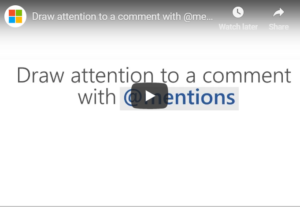
by Felicien | Dec 17, 2018 | Education
When you launch an email campaign, you want your message to be read and understood by as many people as possible, and one way to do that is by making your emails accessible to people with disabilities. Those with visual, cognitive, auditory, or mobility impairments have special needs that can be addressed by adhering to some simple practices and assistive techniques to ensure that your message can reach them too. Failing to take steps to include these individuals is not only considered insensitive these days, it’s legally required in many countries, and more to the point, it also costs your business.
Why Email Accessibility Is Important
There are a lot more disabled people in the U.S. and globally than those who aren’t affected by it personally realize. According to the National Institutes of Health, 37.5 million American adults, or 15%, have hearing loss, 1.3 million are blind, and another 2.9 million have low vision. The Centers for Disease Control says that 25% of adults in the U.S. experience some type of disability, and the World Health Organization states that hundreds of millions of additional people around the world are disabled.
From a business perspective, it has been estimated that people with disabilities in the U.S. have $1 trillion in total income and more than $220 billion in disposable income. That makes them a demographic that most businesses can’t afford to ignore, and if you’re not practicing email accessibility, you’re missing out on a big potential market.
So how can you start making your emails more user-friendly and understandable to those with disabilities? Here are ten methods you can start using right away.
10 Tips For Meeting Email Accessibility Standards
Create concise and straightforward content. This is something you should be doing for the benefit of all your readers. Stay away from language that’s too technical and trendy business jargon that can distract readers away from your message. It’s also a good idea to use very clear subject titles to help those using assistive technologies like screen readers understand what the email is about, and to include a link to a plain text version of the email.
Use a larger font size. This can be very helpful for those with low vision and for dyslexia sufferers too. Aim for at least 14 pixels or larger for the best results.
Consider your use of colors. The use of color can be important for branding and capturing attention, but it can be a problem for those with vision impairment. Text and other types of content need to have a certain amount of contrast against a background color to be visible, with the accepted standard being a ratio of 4.5:1. You can check your emails for the right contrast on any page with this handy online tool.
Break up text content with images. You probably already know that it’s good form to keep your paragraphs short and to use subtitles, but placing images that represent a visual depiction of what’s being conveyed in the text between longer paragraphs can help to increase engagement and message reinforcement for all your readers and also help those with disabilities to understand. Keep in mind that if you use animation or graphics that flicker or flash like a strobe that it can cause seizures in people with certain disorders.
Use alternative text for images. Alt text is an attribute that can be added to an email to display a box with a text description of what an image is for those who can’t perceive them.
Use mobile accessibility designs. With so many people using mobile devices these days, your emails should be mobile friendly for viewing on smartphones and tablets. You can make them even more accessible to those with disabilities by including the ability to easily resize content without using third-party technology and by using large target areas for your CTA buttons.
Use HTML5 semantic elements. Use the same heading and paragraph tags that you would use to render content on a regular web page to make your text clearer and more easily understood.
Use “presentation” in layout tables. It’s common practice to use tables for layout and formatting purposes in emails, and you can easily make them more accessible by adding the element role=“presentation”. This tells any assistive technology to read the content but to ignore the table properties.
Include a text description for hyperlinks. Someone using a screen reader won’t know where a hyperlink is taking them if the text just reads ‘click here’. Adding text to describe the content of the landing page will let them decide if they want to click the link or not.
Consider adding transcripts and captions to videos. This is essential for those with hearing and vision impairments and also allows for private viewing or reading in situations where having the sound up is impractical, and when someone wants to understand the video transcript for deeper comprehension and consideration.
Creating emails that are more accessible to people with disabilities is not only considerate to your current or potential customers, but it’s also just good business practice. You can learn more about best practices in the Web Content Accessibility Guidelines (WCAG). You should also make use of this helpful checklist, and take advantage of this list of evaluation tools to test your emails.

by Felicien | Dec 17, 2018 | Education
You have a lot going on during the business day and beyond, so any short-cut that adds productivity and efficiency to your day is a nice welcome. Microsoft recently updated its Word, Excel, and PowerPoint programs with a nifty even if simple tool: the @mention.
You have likely been there where you want to make a comment, you do make a comment, and that comment gets lost among all the other comments. Worse yet: the document you are reviewing will be reviewed by not just one but many other people. Without personalization in these comments, everyone will read each comment without knowing for whom it was intended. The @mention is a feature that solves these types of problems — problems that seem trivial at first but which can really add up. Here’s how to use the @mention feature and how to do so with success.
How to Use @mention in Microsoft Office?
The @mention feature is only available using Office 365. It allows you to tag someone who has permission to open the document for feedback by emailing that person with a direct link to the comment. It is really quite simple to use:
Make sure you are signed into Outlook and then sign into Office 365.
Open the document to be reviewed in either your SharePoint library or OneDrive for Business.
Go to Review > New Comment.
Type @-person’s-name within the comment.
The feature, for the moment, however, is only available online and to those who are Office Insiders using Windows or macOS. It is not yet available in iOS or Android.
How to Use @mention strategically?
Using the @mention strategically is what will really make this feature work for you. Here are a few tips to keep in mind:
Bring a comment to someone’s attention immediately by using @mention. Here, we specifically mean targeting a colleague who may have specific interest or knowledge of the matter or who may be loaded with work and an @mention may be the thing to get his or her attention.
For one comment, you can @mention more than one person, so there’s no need to draft more than one comment for the same issue.
You can @mention someone without permission to access the document — in this case, Microsoft will ask you to provide permission.
Make sure before starting the review that you have given permission to everyone who may also need access to the document so you do not need to worry about this additional step later.
Also, if you are wondering whether or not a person subject to multiple comments will now receive multiple emails, Microsoft has already thought about it, too. Microsoft will batch the links into a single email if there is more than one @mention for the same person.
Now that you know how to use @mentions in your Microsoft programs, and how to use it strategically, it is time to get back to get back to being productive. Sign in and try it out and see how soon other reviewers start responding.

by Felicien | Dec 17, 2018 | Education
On December 17, 1903, Orville and Wilbur Wright made the first successful flight in a mechanically propelled airplane. To celebrate the accomplishment and commemorate the achievements of the brave brothers, December 17 became Wright Brothers Day by a 1959 Presidential Proclamation. Wright Brothers Day is now honored every year in the United States with festivities and activities.
A Land of Innovation and Invention
In the nation’s beginnings, the founding fathers had to cross an unfriendly ocean to live in uncharted land. Early settlers made their way across the vast landscape, using their strength and ingenuity to adapt to often harsh conditions.
Over the history of the US, Americans laid track to build railroads to span the nation, while other Americans built the cars that would change the way people live. The Wright Brothers succeeded in their revolutionary flight soon after.
What Was Once Thought Impossible
Before the Wright Brothers launched their flight, most people could not imagine that flight by humans was possible. Earlier efforts to leave the ground were limited, because there was no way to sustain flight or control a contraption in the air. The Wright Brothers knew that they would need to be able to control the wings and nose so that a pilot could navigate while in the air.
While it seems obvious now, their ideas changed the way humans view the world. People felt attached to the earth, trapped in two dimensions. Once people were able to fly, they could see the world from an entirely new perspective. Distances become relative, and the world seems both grander and more interconnected. The boundaries that used to limit people’s activities no longer hold that control over our lives.
Humble but Loving Beginnings
Milton and Susan Wright were the parents of Orville and Wilbur, and they encouraged their sons to learn about whatever they could and to travel to other parts of the world. Mr. Wright was a bishop in the United Brethren Church, and his position caused him to travel a lot for church business. While he was away, he sent many letters and gifts home to his family, exposing them the many fascinating wonders the world has to offer.
Wilbur and Orville started in the printing business and even had their own newspaper for a while. They started their own bicycle business in 1894, making and selling bikes to turn a profit. But their dreams were always bigger.
When Wilbur and Orville started seeing other inventors’ attempts at building flying machines, the brothers figured out where they were going wrong. Their first gliders did not succeed, but the Wright Brothers kept trying until they achieved their dream. The Wright Brothers decided what they wanted to do, and then they realized what other people couldn’t with their own abilities.

by Felicien | Dec 14, 2018 | Education
Facebook has just announced that a Photo API bug gave app developers access to user photos outside of the scope intended for 5.6 million users. This includes granting apps access to Facebook Stories, Marketplace photos, and photos that were uploaded but not shared. The bug was in effect from September 13th to September 25th.
As of now, Facebook is working on releasing tools to allow app developers to determine if they were impacted by this bug, and will work with them to delete unauthorized photos. Facebook will also be notifying any users they suspect may have been affected.
Learn More
If you have any questions or concerns about this latest Facebook bug, please don’t hesitate to contact me directly at {phone} or {email}.

by Felicien | Dec 14, 2018 | Education
Cyber threats are a genuine danger for businesses, no matter their size or industry. Companies that face data breaches are likely to fail within months after the attack, according to the National Cyber Security Alliance. Security issues can ruin your reputation and cause expensive damage to your company.
In 2019, we are already predicting increased cyber crimes to steal more data and resources. The FBI reported that over $1.4 billion in losses were experienced by companies and individuals in 2017. These expenses come from increasing security, losing information, losing physical resources, ransomware payouts, scams and more. The most significant sources of cybercrime included:
Email compromise
Confidence fraud
Non-payment or non-delivery scams
Corporate data breach
Investment scams
Identity theft
Advance fee scams
Personal data breach
Real estate/rental fraud
Credit card fraud
Looking forward into 2019, we are preparing to face some of the biggest and hardest attacks yet. Hackers are working to build faster and smarter tools that get around the security systems and regulations that organizations and companies have in place. Companies have to be prepared for cybercrimes that could wreak havoc on their customers or business. Most industries have strict compliance and regulations to keep data safe and can face fines or even jail time if they are not diligent in their cybersecurity efforts. Here are the five major cybersecurity trends we expect to see in 2019:
Multi-Factor Passwords
The password alone is becoming increasingly easy for hacker entry. Fingerprints, ear scans and even social security numbers are all increased measures of security to help battle cybercrime. Using multi-factor passwords is going to be a crucial part of security for 2019 for both personal data and organizational strategies. A large amount of data breach occurs due to human error or negligence so multi-factor passwords can help decrease some of those occurrences.
Data Privacy and GDPR
The EU pushed businesses everywhere when they required the adaptation of the General Data Protection Regulation (GDPR). Many companies and organizations that didn’t have dealings in the EU started making changes to prepare for the level of modifications expected so they wouldn’t be scrambling to catch up later. The regulations that went into effect this past May are still going to have a significant impact on 2019.
The Rise of Cryptojacking
Last year, ransomware cost over $1billion in damage, but we see a shift towards crypto jacking as the more popular attack. Ransomware takes a lot of research, social engineering and development. In many cases, the payments have gotten smaller because companies, educational institutions and organizations are refusing to pay the ransom at all. Cryptojacking is stealing cryptocurrencies by leveraging the computers of an unsuspected user without their knowledge or permission.
When a cyber criminal puts the crypto mining program into effect (often in a JavaScript), the system will slow it’s processing power as it also operates the mining efforts. This can cause whole systems to falter, leading to sluggishness or downtime for businesses. Best case means lost productivity, but a worst case might bean major blackouts if the attack occurs on electrical utility computers or huge issues for patients if the attack is happening to a hospital. This method of cybercrime is less time consuming to set up, more accessible for the hacker to implement, provides a higher payout and often is harder to track.
AI Attacks
We are seeing a heightened increase in artificial intelligence (AI) and machine learning (ML) that cybercriminals are using to focus their attacks. Hackers are using these systems to train and fine-tune their own programs with malicious intent while maintaining a strategic distance.
IoT Regulation
The Internet of Things (IoT) is a grouping of intelligently connected systems that might include vehicles, devices, appliances, electronics, software, connectivity and actuators. These primarily are unregulated and we expect 2019 to be the year when the security issues here may finally be addressed. This may require certifications or a governmental agency to step in and formulate laws. With increased connectivity, the threat of IoT security breaches are genuine public safety concerns and shouldn’t be taken so lightly. Companies that produce these connective devices and software should already be carefully considering these concerns and how to best keep the users protected.
We know tech threats are a genuine issue for your business. Outsourcing tech support or tech help is one way to ensure you have all of your bases covered. If you need help implementing security, contact us today. We offer the strategies, technology and expertise to keep you protected!




